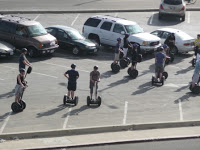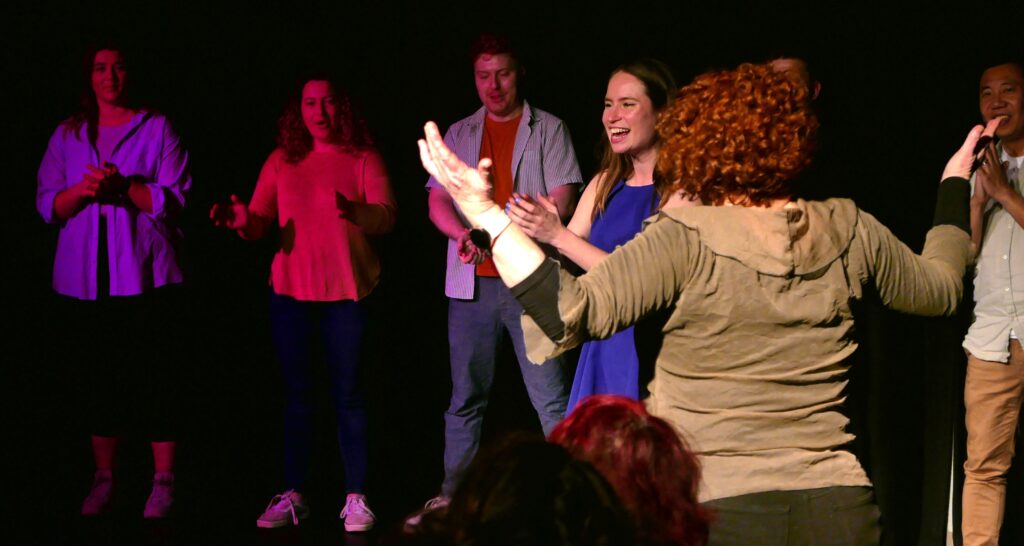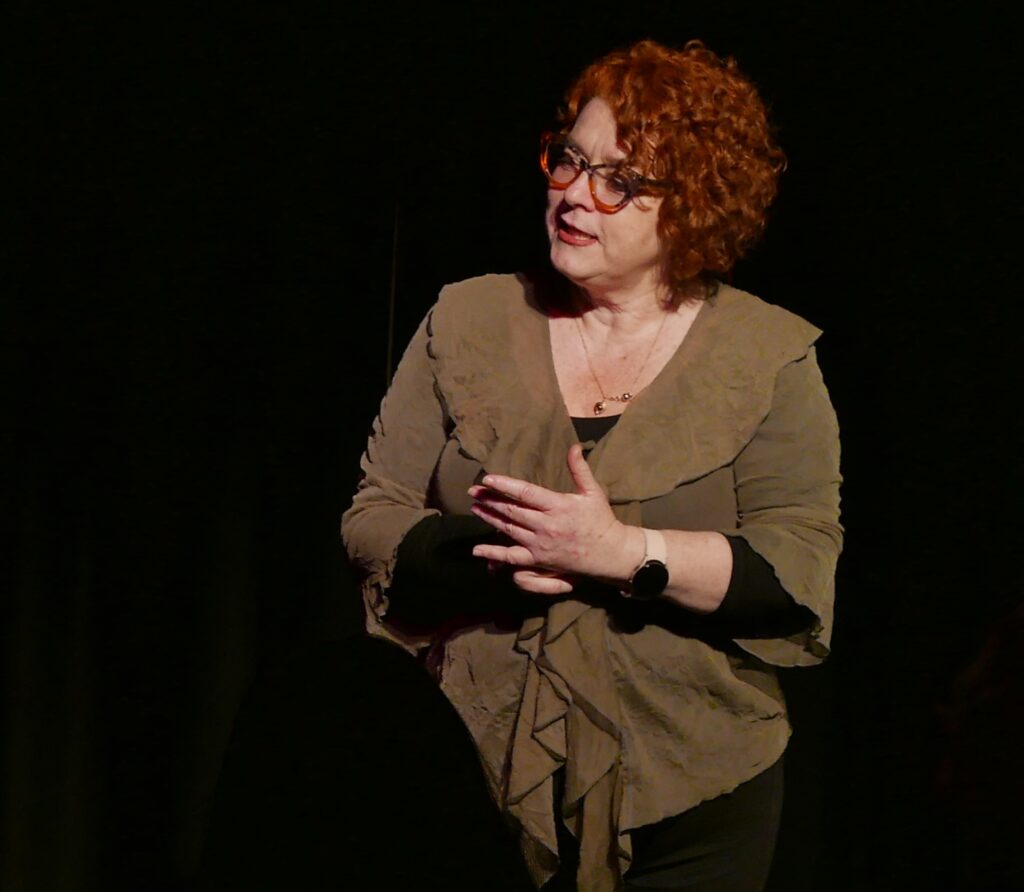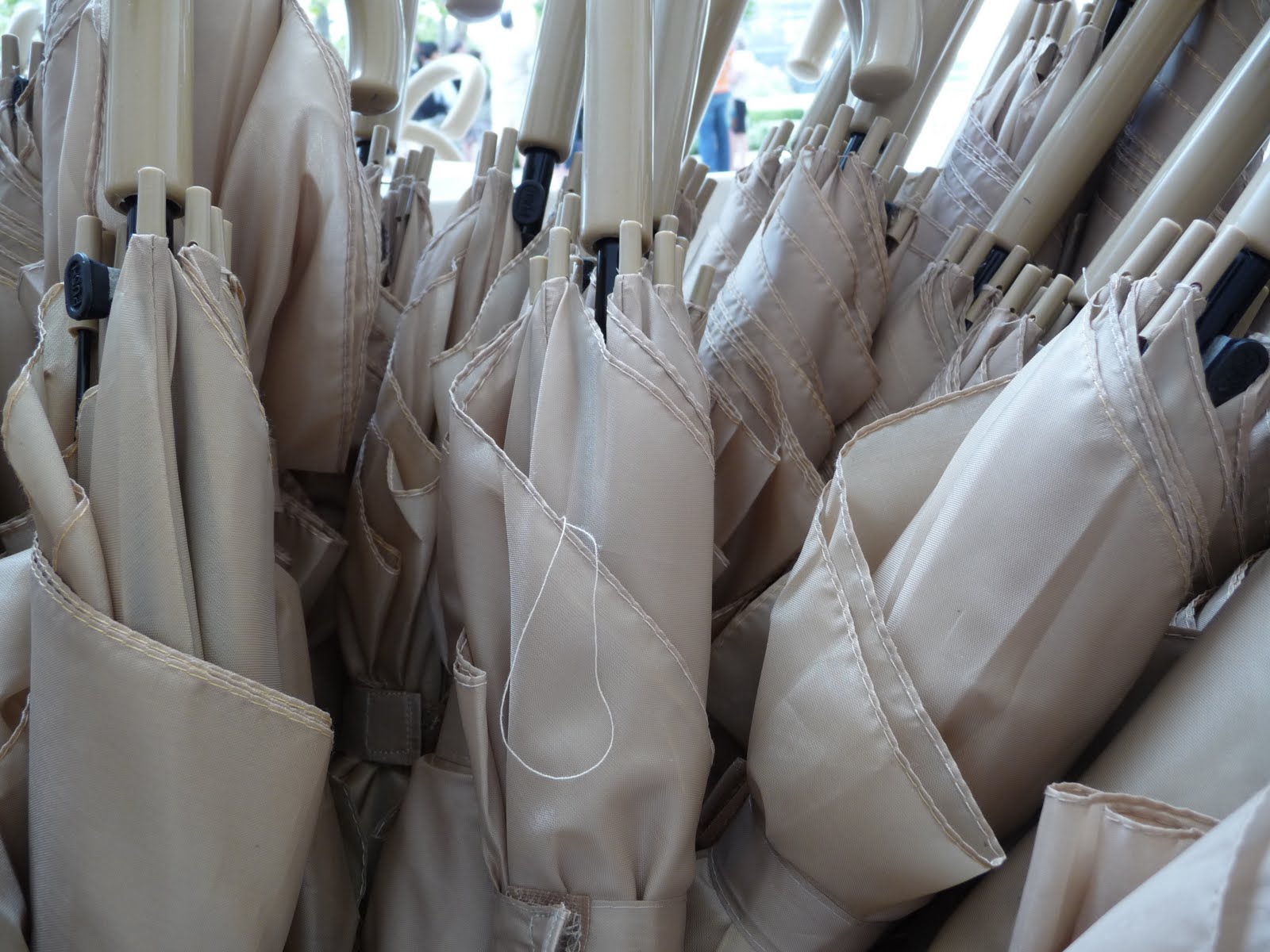warm ups
i think i blogged this warm up yesterday, but now i have it’s name. It’s called bad rap. set a topic for the rap if you like. the group chants bad rap, bad rap bad rap (x2), then first person does 2 lines in rhythm, the first with a set up and then a second line for the pay off rhyme, right up to the final word, but they don’t say the final word, the person after them says a different word (which still makes sense, but isn’t the pay off). keep going round the circle.
we played zip zap zop, yes you (a version where you say their name, they say yes, you take their place, etc), and simultaneous pass the clap. All at once.
cool warm up: where have my fingers been? the group chants where have my fingers been, where have my fingers been, and the first person improvises a short 3 line-ish scene between their two fingers (as if they were finger puppets). when they have finished the scene the group chants “and that’s where my finger’s been”. we set a generic topic for the scenes (i think, it’s 3 days ago now).
we learnt a 3 part round and used it as a character and singing in character game. any round will do, ours went i love the mountains, i love the rolling hills, i love the flowers, i love the daffodils, i love the fireside when the lights are low, boom di ah da boom di ah dah boom di ay, boom di ah da boom di ah da boom di ay). once we had it down, we all stood in a circle. first person started the first part of the round in character (voice, physiology, accent etc). 2nd person came into the centre as the same character, then 3rd round joined in and the outer circle sang along with the boom di ah dahs. then we began again with a new character.
did a couple of viewpoints inspired physical warm ups: group had to jump at the same time (not as easy as it sounds if one person doesn’t lead or obviously signal, and then we ran in a circle and had to turn at the same time, and then lastly we had to randomly turn 3 times and jump 3 times at some point).
and then we did some viewpoints work with music: we took inspiration from the spatial relationships between us as a group, then from the topography of the stage, and from the architecture of the stage, looking to exploit each relationship differently. tina landau and anne bogart are the viewpoint gurus. (there are other viewpoints, including kinesthetic response, tempo, shape, gesture). jeff recommended viewpoints as a good way to break out of a shell
general advice-y stuff
three person general agreement scenes (group agreement makes for a great song) – looking for extreme agreement, not just in character,but also agreement on point of view (we all love doves or we all hate doves, not just all of us care in some way, but in the same way).
using stuff like ‘you’re my best friend’ says you’ve run out of ideas. if you want to use ‘the best’ then say why it’s the best – we’re the best little cafe in the world because we have just 3 customers and we love them all
need to “take the song out” towards the audience – pick a brick. if you’re singing to or about your scene partner you can give them occasional eye contact / gesture, but you need to sing to the audience
once you’re in music let it be music, it’s more powerful. don’t talk, it drops the energy
list songs are great and easy – if it’s about a car, then sing a list of things that the car is (bright, shiny, has a dashboard, an ipod jack, a rear vision mirror…) visualise the car, and sing what you see. the audience finds it oddly enjoyable, and it takes no effort really!
good to know the characteristics of genres: e.g. blues is often a complaint/expression of pain, languide, low down dirty, move in the way, voice gravelly and low; reggae: sound stoned, random words (ja, mon, freedom) repetitiveness, sing about revolution or marijuana, god (ja)
Musical numbers are more interesting when people come on stage and support (swaying on the back line isn’t as effective). be a random band, be on stage as the back up singers (motown, be the supremes), be singing furniture in the scene (washing machines, couches, etc)
pay attention to yes and a specific offer specifically: if someone says “this swing will make a front porch very happy”, don’t say “yeah it’s great”, say “yeah that porch will be smiling for days”…
deconstruction
1. root scene of 5 -7 minutes from a one word ask for
2. 3 shorter scenes thematic pulls from root (the characters from the root scenes never appear in the non-root scenes)
3. 2nd chapter root scene
4. 5 shorter scenes, lateral pulls from 2nd root
5. 3rd root scene
6. 7 – 10 commentary scenes
7. final root scene, probably shorter + call back to first scene, caps everything off.
thematic pulls: the themes of the root scene (love, hate, loyalty, motherhood, whatever you hear)
lateral pulls: specific things about the scene: e.g. someone proposes in root scene, so we see a jewelry store (but it’s different characters – character from root scenes don’t appear in non-root scenes), or there are characters spoken about in the root scene who we see; or there’s a mother-daughter relationship in the root, so we see a father-son in the lateral pull, we have a coke in the root, so we see a pepsi factory in the lateral pull.
commentaries: shortish, but varied in length, commentary is pulled from anywhere in the show – call backs,
minor characters mentioned before, energy should build because shorter and sharper)
don’t kill the pull – no need to make it obvious where your idea has come from, if the audience work it out they feel smart, if they don’t, they’re too busy enjoying it to care.
ways to add to or change scenes tag outs, revolving doors, cut tos. focus edit as an alternative to a sweep (talk louder and pull focus to start the new scene, and the other people will leave the stage)
keys to a montage: varied length, different number of people
musical montage: first scene, let it build to a song so pepole know it’s a musical montage.






